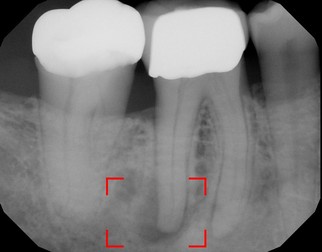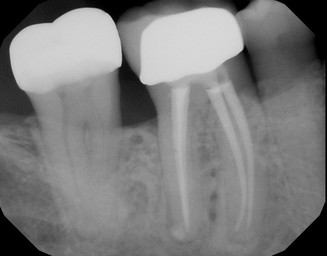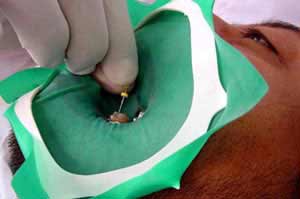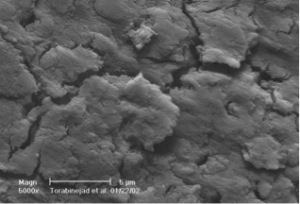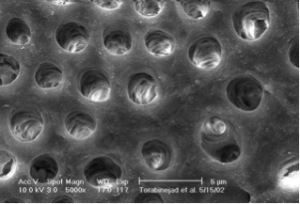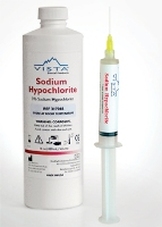It Works*
*Proper Root Canal Therapy is Safe and Effective in greater than 90% of cases when performed properly.
Did you notice the asterisk in the tab?
Root canal treatment is similar in this regard to most everything in life; there is a right way and a hundred wrong ways to do something. Whether it be root canals, knee replacement, electrical work, etc.; a poor job has a significantly higher chance of failing.
Root canal treatment is performed by either a general dentist or an endodontist. General dentists typically have completed 5 - 15 root canals by the time they graduate dental school. Most are capable of performing root canals on uncomplicated teeth (e.g. non-calcified front incisors). Many general dentists recognize the difficulty in performing these treatments on simple cases, let alone challenging ones. Don't get me wrong; some general dentists perform root canals to the standard of care, and a certain percentage even do them well. Molar root canal treatment is referred to endodontists because of its increased difficulty. Most upper molars have 4 canals that MUST be cleaned, even getting back that far in your mouth to work is difficult, and it can be a long, time-consuming, tedious appointment for novices. Root canal retreatments (re-doing a failing root canal) and root canal surgeries (apicoectomies) should only be performed by specialists because general dentists do NOT received any advanced training for these procedures.
Endodontists are specialists in root canal therapy who have completed a 2 or 3 year residency dealing specifically with root canals and root canal surgery (apicoectomy). Endodontic residencies are extremely competitive at most institutions. Typically over 100 qualified applicants vie for 3 - 5 positions. The training is intensive and allows the endodontist to really hone their skill and expertise. They can treat the simple cases so easily and quickly, and manage the very challenging ones. Most specialists complete 1000 cases per year allowing them to continually perfect their skill. Some will argue that not every specialist is extraordinary, and we concede that. But you are much more likely to have treatment performed to the standard of care based on our observations.
If you care to see actual cases demonstrating excellent care vs. failing root canals requiring retreatment (re-doing them), see Success.
The following are necessary for root canal treatment success. These elements also happen to be the standard of care. If you have received a root canal without any of these, you regrettably received a root canal beneath the standard of care. While this list is not all inclusive, it covers the most important and often ignored...
1. Rubber Dams - piece of rubber that surrounds and seals the tooth. It prevents saliva and bacteria from re-entering the tooth during treatment
2. Sodium Hypochlorite - (one of the ingredients in common bleach) - kills bacteria and dissolves necrotic, infected tissue
Often excellence requires using medicaments in combination. Saline or water irrigation has no place in modern root canal treatment
3. Cleaning ALL canals to their terminus (end) - often times entire canals are not cleaned allowing for infection to develop or persist in a tooth.
Often we see cases where only 1/2 or 3/4 of a canal is cleaned. This leaves significant space for bacteria to live and thrive = failed treatment
4. Proper sealing of the root canal - some practitioners choose a filing because it is easy, NOT because its the best. The canal must be sealed to
not allow for bacteria and saliva to re-infect the tooth.
Many other elements enhance root canal success. Operating microscopes allow for visibility of even the most intricate parts of a root. A MUST for finding those hidden canals. Using a chelating agent (e.g. citric acid or EDTA) to remove the smear layer inside a canal = increases cleanliness.
Does root canal treatment fail? Absolutely. Persistent infection exists mostly due to either poor technique or fractured teeth (there are other factors, but MOST failures occur via these two routes.) Teeth can crack and allow for failure. Failure exhibits certain signs and symptoms that most often are ascertainable. For example, chewing sensitivity, achiness, swelling, palpation (touch) sensitivity, and tissue red and hot to the touch. Fractured teeth are sometimes more difficult to diagnose. However, patients are often told that when a tooth is pulled that it was cracked, and can be shown the fracture. Did you hear cracking and popping during the extraction? Was that crack there prior to the extraction or did the extraction cause the crack? I see patients every week where they are told a tooth is cracked or a root canal “did not take” and needs extraction. Often times the tooth can be saved simply by performing the root canal CORRECTLY. So often root canal therapy is performed poorly, notably by non-specialists. Entire roots go untreated which ALWAYS leads to abscess development. Dentists are taught to use rubber dams, but many never do! Canals are routinely missed or only partially cleaned. I routinely treat these teeth and the infection completely resolves. For example, your upper first molar has 4 canals present >90% of the time. I have retreated (re-root canaled) 1000’s of cases with persistent infection. I have never once found all four canals treated by general dentists. Not treating these teeth properly is the greatest cause of root canal problems. But this in no way causes or is even related to cancer! (as some ignorantly claim.)
The real problem with root canals is NOT the treatment itself; the problem is if the treatment is completed poorly, and beneath the standard of care. Rubber dams not being used = allows saliva and oral bacteria into the tooth during treatment. A lack of antimicrobial irrigants, which are necessary to kill bacteria, = allows for persistent infection. Poor obturation (root canal filling) = leads to either nonexistent or deficient sealing of the root canal system which in turn allows for leakage. No smear layer removal = leaves behind bacteria, etc. Unfortunately, it’s a procedure that can be performed poorly with relative ease - it is VERY difficult to perform well with a high degree of proficiency. I am seeing so many root canal teeth requiring retreatment now from practitioners continually doing a terrible job - just like they did in 1920 (see Weston Price and George Meinig). It’s always amusing when these same practitioners, whom always do "their own endo", routinely send their family and friends to the specialist because they know there is A BIG DIFFERENCE.
For more information, please visit the American Association of Endodontists website. The patient tab is on the right side of the page and includes diagrams and detailed explanations.
2. Sodium Hypochlorite - (one of the ingredients in common bleach) - kills bacteria and dissolves necrotic, infected tissue
Often excellence requires using medicaments in combination. Saline or water irrigation has no place in modern root canal treatment
3. Cleaning ALL canals to their terminus (end) - often times entire canals are not cleaned allowing for infection to develop or persist in a tooth.
Often we see cases where only 1/2 or 3/4 of a canal is cleaned. This leaves significant space for bacteria to live and thrive = failed treatment
4. Proper sealing of the root canal - some practitioners choose a filing because it is easy, NOT because its the best. The canal must be sealed to
not allow for bacteria and saliva to re-infect the tooth.
Many other elements enhance root canal success. Operating microscopes allow for visibility of even the most intricate parts of a root. A MUST for finding those hidden canals. Using a chelating agent (e.g. citric acid or EDTA) to remove the smear layer inside a canal = increases cleanliness.
Does root canal treatment fail? Absolutely. Persistent infection exists mostly due to either poor technique or fractured teeth (there are other factors, but MOST failures occur via these two routes.) Teeth can crack and allow for failure. Failure exhibits certain signs and symptoms that most often are ascertainable. For example, chewing sensitivity, achiness, swelling, palpation (touch) sensitivity, and tissue red and hot to the touch. Fractured teeth are sometimes more difficult to diagnose. However, patients are often told that when a tooth is pulled that it was cracked, and can be shown the fracture. Did you hear cracking and popping during the extraction? Was that crack there prior to the extraction or did the extraction cause the crack? I see patients every week where they are told a tooth is cracked or a root canal “did not take” and needs extraction. Often times the tooth can be saved simply by performing the root canal CORRECTLY. So often root canal therapy is performed poorly, notably by non-specialists. Entire roots go untreated which ALWAYS leads to abscess development. Dentists are taught to use rubber dams, but many never do! Canals are routinely missed or only partially cleaned. I routinely treat these teeth and the infection completely resolves. For example, your upper first molar has 4 canals present >90% of the time. I have retreated (re-root canaled) 1000’s of cases with persistent infection. I have never once found all four canals treated by general dentists. Not treating these teeth properly is the greatest cause of root canal problems. But this in no way causes or is even related to cancer! (as some ignorantly claim.)
The real problem with root canals is NOT the treatment itself; the problem is if the treatment is completed poorly, and beneath the standard of care. Rubber dams not being used = allows saliva and oral bacteria into the tooth during treatment. A lack of antimicrobial irrigants, which are necessary to kill bacteria, = allows for persistent infection. Poor obturation (root canal filling) = leads to either nonexistent or deficient sealing of the root canal system which in turn allows for leakage. No smear layer removal = leaves behind bacteria, etc. Unfortunately, it’s a procedure that can be performed poorly with relative ease - it is VERY difficult to perform well with a high degree of proficiency. I am seeing so many root canal teeth requiring retreatment now from practitioners continually doing a terrible job - just like they did in 1920 (see Weston Price and George Meinig). It’s always amusing when these same practitioners, whom always do "their own endo", routinely send their family and friends to the specialist because they know there is A BIG DIFFERENCE.
For more information, please visit the American Association of Endodontists website. The patient tab is on the right side of the page and includes diagrams and detailed explanations.
